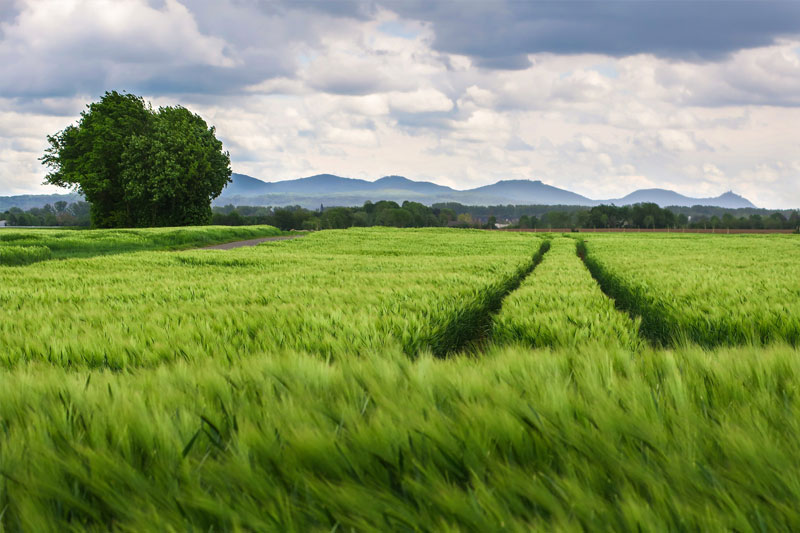
Huge growth in number of holdings
The Census of Agriculture 2021/22 has reported 4,130,789 holdings including 3,999,285 holdings with land and 131,504 holdings without land in Nepal. The first Census of Agriculture 1961/62 reported 1540 thousand holdings in Nepal. The number increased to 3360 thousand in 2001/02. It has further increased to 4130 thousand in 2021/22. Over a 60-year period, there has been a huge growth of 168 percent in the number of holdings. The total area of holdings increased from 1680 thousand hectares in 1961/62 to 2650 thousand hectares in 2001/02.
However, there has been a continuous decrease in the area under cultivation since 2011/12. The area has decreased from 2520 thousand hectares to 2220 thousand hectares in the last 10 years as shown by last two censuses (2011/12-2021/22). Despite 8 percent increase in the number of holdings, there has been 12 percent decrease in the total area of holdings during the last two censuses. The area under holdings increased by only 32 percent over the sixty-year period though the number of holdings increased by 168 percent during the same period. The recent trend of the last two censuses shows a discrepancy as the number of holdings increased by 8 percent, but the total area of holdings decreased by 12 percent. These trends suggest changes in agricultural practices, land use, or economic factors influencing farming in Nepal over the years. It requires further analysis to understand the factors driving these trends and their implications for the agricultural sector in Nepal.
When examining land use patterns across the provinces of Nepal, Koshi Province emerges with the highest total area of holdings and then followed by by Madhes Province, Lumbini Province, Bagmati Province, Gandaki Province, Sudurpaschim Province, and Karnali Province. This sequence is also observed in the distribution of agricultural land. Notably, Madhes Province stands out with the largest area of arable land, constituting approximately one-fourth of Nepal’s total arable land. The remaining provinces show a consistent pattern, with Karnali Province having the smallest share. Detailed information on land utilization across these provinces is provided in the subsequent tables, with a comprehensive insight into the diverse agricultural landscapes within the country.
The information from the Census of Agriculture 2021/22 focuses on the categorization of land into wet land and dry land, indicating changes in their respective areas over the past 10 years. The Census of Agriculture 2021/22 result has shown 1,429,981 hectare of wet and 788,429 hectare of dry land out of the 2,218,410 hectare of total land. As the total land has decreased, wet and dry land has also decreased by 10 and 16 percent respectively as compared to the previous census.
Overall, this information provides insight into the changing dynamics of land use in Nepal, particularly in terms of wet and dry land, emphasizing the need for further analysis to understand the underlying causes and potential implications for the agricultural sector and beyond.
According to the recent agriculture census 2021/22, 2,218,409.9 hectares of land were operated by agriculture holdings. 95.6 percent (2.12 million hectares) of the total land was used for agriculture. 80.7 thousand hectares were covered with forest and other wooded land, showing a significant increase of 46.9 percent compared to the previous Census of Agriculture. 12.9 thousand hectares were used for ponds, which is more than three times the previous census. The remaining 3.2 thousand hectares were classified as other land, either unused or underdeveloped but potentially usable for agricultural activities with some more human effort.
The majority of agricultural land, 1,730.9 thousand hectares, was used for temporary crops as shown by the Census of Agriculture 2021/22. The area under permanent crops was 145.4 thousand hectares, indicating a decrease in both the areas of temporary and permanent crop. Over the last ten years, there has been a decrease in the land used for temporary crops by 392,316 hectares (18.5%) and for permanent crops by 23,093 hectares (13.7%). The land under temporarily fallow has almost doubled, reaching more than sixty thousand hectares in the 2021/22 census. This information provides insights into the changing scenario of land use, with shift in areas allotted to different types of crops and other land uses.
Arable land in Nepal occupies approximately 1.803 million hectares (12 percent) of the total land area of 14718 thousand hectares in 2021/22. Madhesh Province reported the largest arable land area, totaling 437,203 hectares and is followed by Koshi Province (398,773 hectares). Karnali Province reported the lowest proportion of arable land, amounting to 96,934 hectares.
The historical trends in land distribution over the past 60 years reveal a consistent pattern across the various types of land, including total holdings, agriculture land, and arable land. Notably, when there is a decrease in the area of holdings, there is a corresponding decline in both agriculture land and arable land. Conversely, from 1971/72 to 1981/82, there was an overall increase in all types of land. However, from that point onward, there has been a continuous and notable decrease in land areas. The most significant decline occurred in the last decade, spanning from 2011/12 to 2021/22.
Source: National Sample Census of Agriculture Nepal, 2021/22

